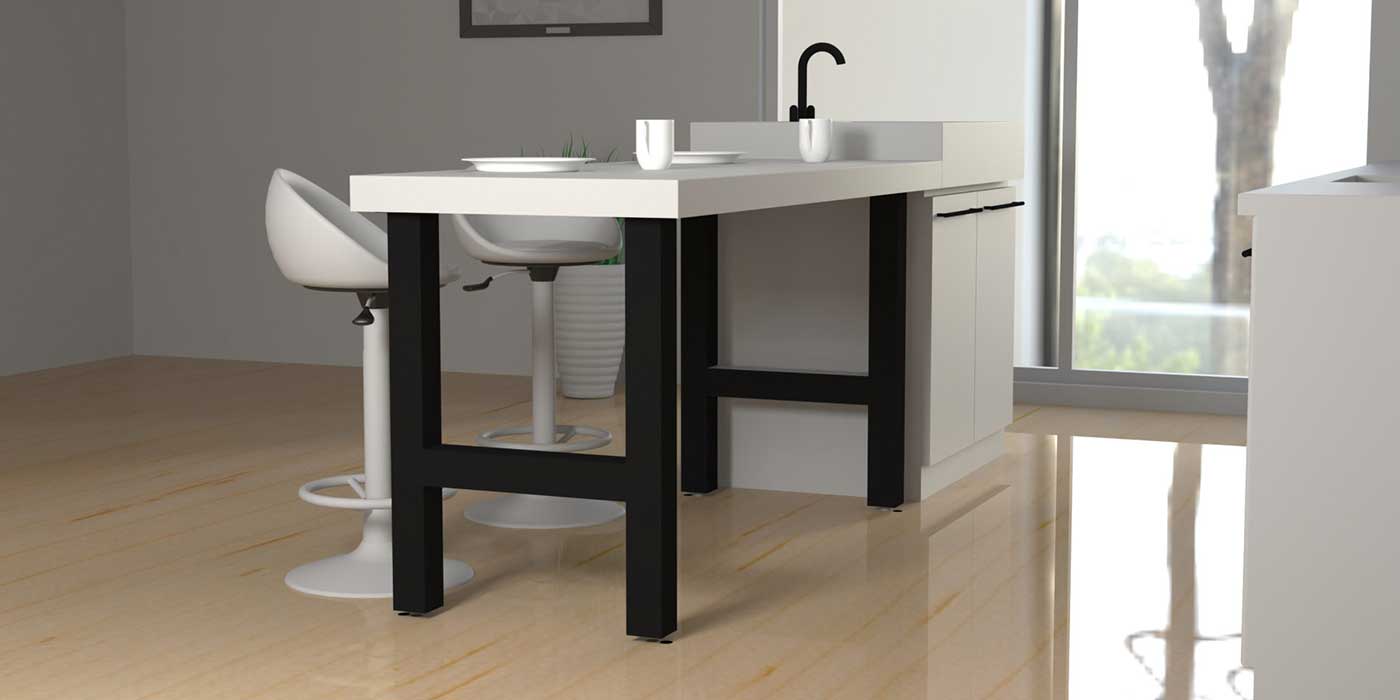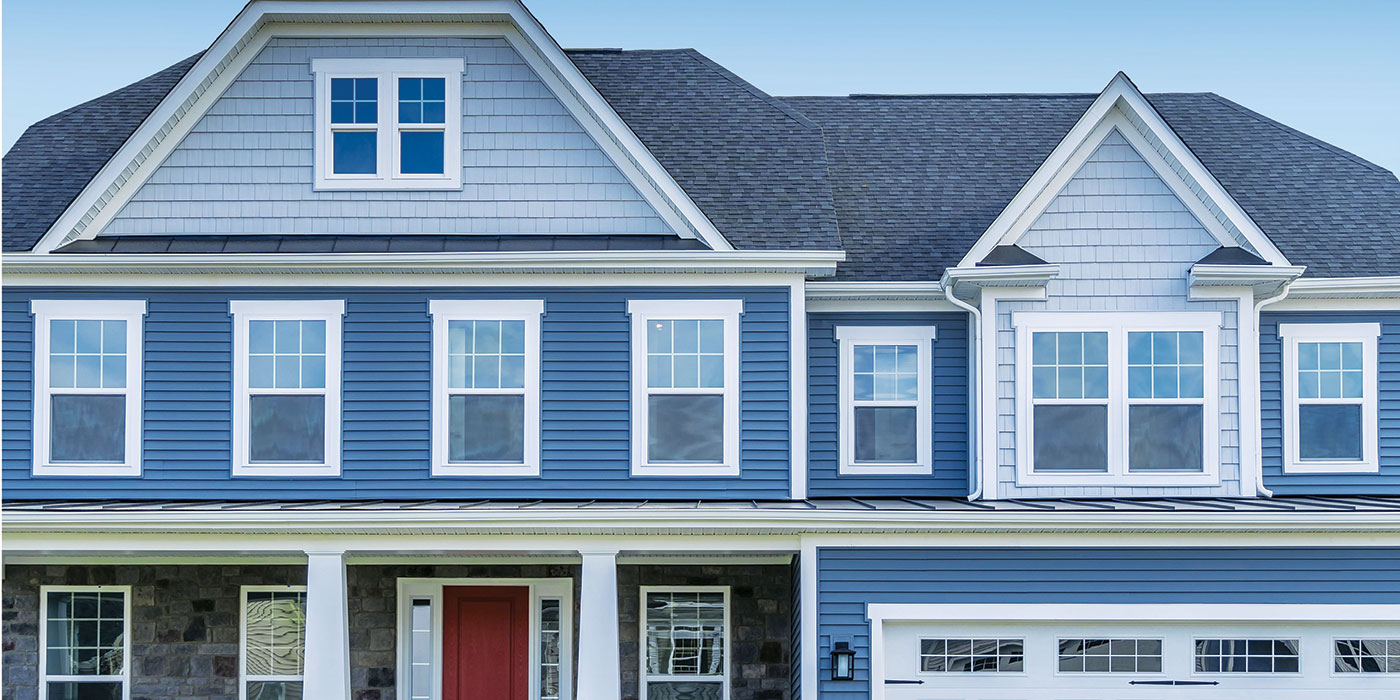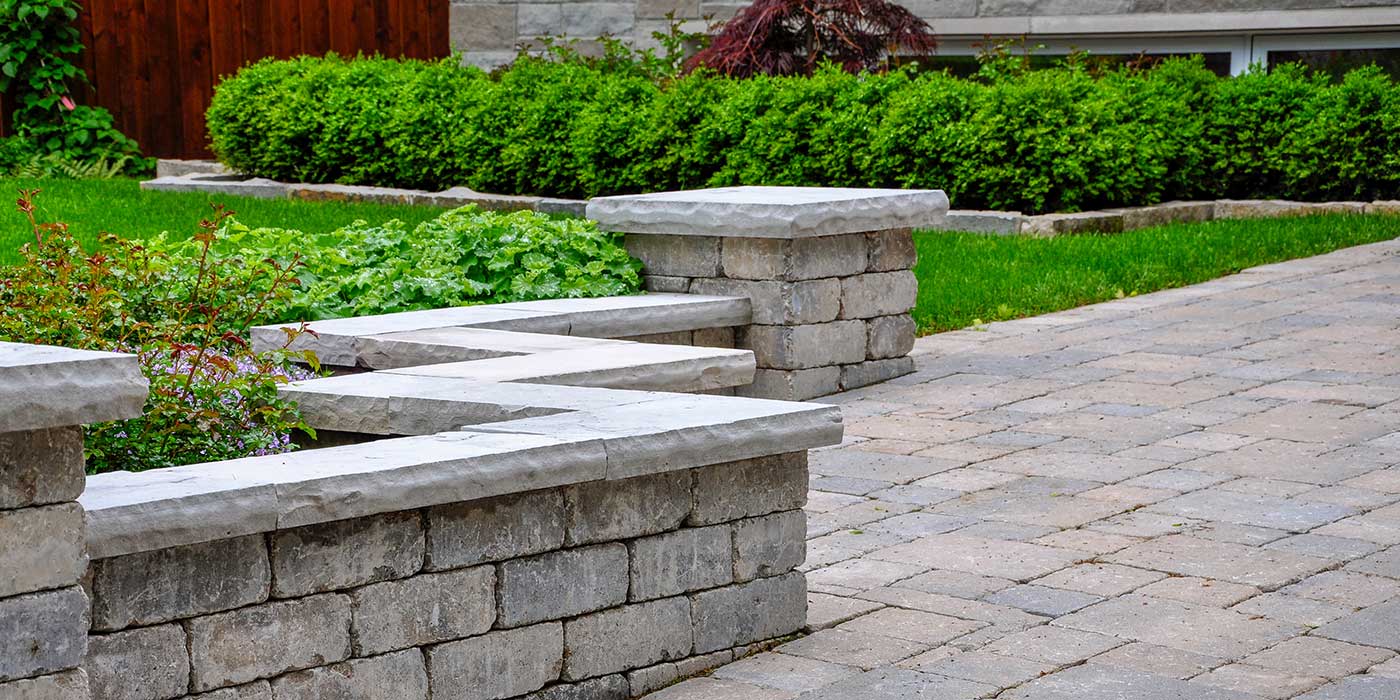A paver patio will add outdoor living space to your home and will be virtually maintenance-free except for the occasional power wash. Paving stones are available in dozens of shapes and colours so you can be as creative as you want with your patio design. The overall size will depend on the size of your yard and should be big enough to fit your outdoor furniture with plenty of room to walk around. Installation is an easy DIY project and can be done in a weekend depending on the size of your patio. It’s crucial to carefully prepare the patio base that the pavers will sit on to ensure a solid surface with minimal heaving in the winter. Follow these steps to build a good base for a typical patio installation:
1. Prepare the area
The patio area needs to be dug out and free of roots and rocks. Start by measuring and staking the outside perimeter of your patio and make sure the area is square. Use string and a line level to measure the depth you need for your base. The finished paver patio should sit level with the ground or slightly above so you will need to dig 7 inches plus the depth of your paver (you will be laying 6 inches of gravel paver base, 1 inch of paver leveling sand and the pavers on top). Note that pavers come in different heights. If you will be using your patio for heavy things, like a hot tub, you will need a thicker paver. Your patio should slope away from the house at least 1 inch every 8 feet for drainage. The most time you will spend on this project is preparing the area to get it right. Once you have this step done, this is the time to bury electrical cables if needed.
2. Tamp & layer
Tamp the dirt base with a rented plate compactor. A hand tamper can be used for small projects but a plate compactor will do a better job in a big area. Add the gravel paver base 2 or 3 inches at a time and wet it between layers. Remember to maintain the slope away from the house. Once you have 6 inches laid, tamp the surface. Wetting the gravel will keep dust to a minimum when tamping. Next lay 1 inch of paver leveling sand, maintain the slope in the grade and tamp again.
3. Lay the pavers
It’s a good idea to install paver edging around the perimeter of your patio. This is a hard plastic edging, the same height as your pavers, that secures the pavers and maintains the shape of your patio. Stake it in the ground to secure. Start laying the pavers in a corner and on a hard edge such as a wall if possible. Use wood stakes and string to act as a guide to keep your rows straight and square. Place stones straight down into the sand and fit them together snugly. Tap the tops of the stones with a rubber mallet to make sure they sit even. Depending on the laying pattern, finish off rows with half-sized blocks. Some cutting of stones may be necessary to fit odd size spaces, check the manufacturer guidelines for cutting instructions.
4. Top with polymeric sand
Using a push broom, sweep polymeric sand across the surface of the pavers to completely fill the gaps in between. Use the plate tamper on the surface of the pavers, sweep again with polymeric sand then tamp one final time. Use the broom to remove all excess polymeric sand from the surface. The sand should be in the gaps only. Once the surface is clean, wet the pavers with water. The water will react with the polymeric sand to form a tight, mortar-like joint.



